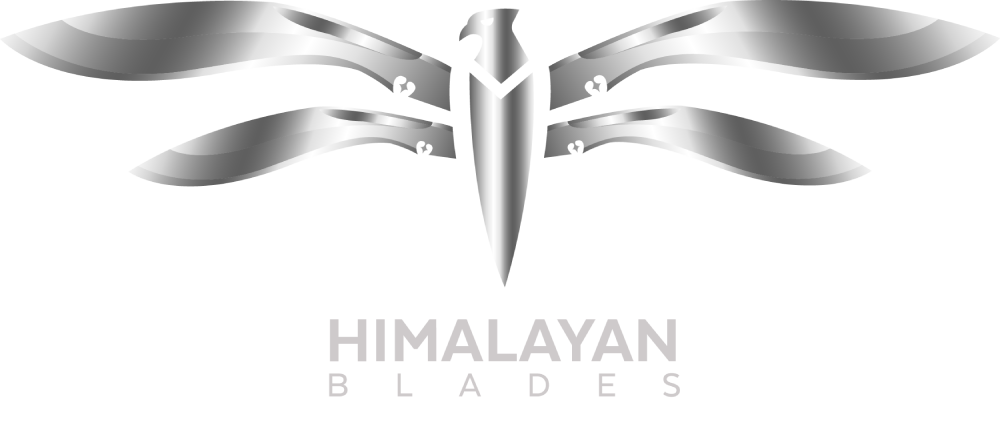
How to Choose the Perfect Khukri: A Buyer’s Guide
The Khukri is more than just a blade; it’s a symbol of heritage, craftsmanship, and versatility. Originating from Nepal, the Khukri has become a beloved tool for collectors, outdoorsmen, and those who appreciate the power and precision of a finely crafted blade. However, with so many variations in size, material, and purpose, choosing the right Khukri can be a daunting task. In this guide, we’ll walk you through everything you need to consider when selecting the perfect Khukri, ensuring that you make a choice that fits your needs and preferences.
1. Understanding the Different Types of Khukris
Khukris come in various types, each designed for different purposes. Before purchasing one, it’s essential to understand which type suits your intended use.
Combat Khukris: These blades are designed for military use and self-defense. They are lightweight, with a sharper edge for cutting through tougher materials. The famous Gurkha Khukri falls into this category, known for its balance and ease of use in combat.
Utility Khukris: These are larger, heavier blades designed for everyday tasks such as chopping wood, clearing brush, or agricultural work. Utility Khukris are typically sturdier, with a more durable blade meant for hard use.
Ceremonial Khukris: These blades are not intended for heavy use but rather for ceremonial or decorative purposes. They often feature ornate handles and sheaths, with intricate designs showcasing the blade-making artistry. If you’re looking for a display piece or a collector’s item, a ceremonial Khukri might be the perfect choice.
Tip: Think about your intended use before choosing. A combat Khukri might not be ideal for chopping wood, while a ceremonial blade may not hold up to regular wear and tear.
2. Choosing the Right Size
Khukris come in a variety of sizes, typically ranging from 8 inches to 15 inches or more in blade length. The size of the Khukri will significantly impact its usability, so it’s essential to choose a size that fits your needs.
Small (8–10 inches): Compact and easy to handle, smaller Khukris are excellent for self-defense and light utility work. They are easier to carry, making them a great option for hikers, campers, or those looking for a multipurpose tool.
Medium (10–12 inches): A middle-ground size, medium Khukris are versatile and can be used for both self-defense and utility tasks. They provide a good balance between portability and cutting power, making them a popular choice for general outdoor activities.
Large (12–15 inches or more): Larger Khukris are heavier and designed for heavy-duty tasks like chopping wood or clearing dense vegetation. These blades require more strength to wield, but they are incredibly effective for tough jobs.
Tip: For most buyers, a medium-sized Khukri offers the best balance of versatility and usability.
3. Material Matters: Blade and Handle
Blade Material
The quality of the blade is crucial when choosing a Khukri. Traditional Khukris are forged from high-carbon steel, which is known for its sharpness and durability. However, modern Khukris may also be made from stainless steel or other alloys.
High-Carbon Steel: Known for its toughness, high-carbon steel is ideal for Khukris meant for heavy use. It holds a sharp edge well but may require more maintenance to prevent rusting.
Stainless Steel: While stainless steel is more resistant to corrosion, it may not be as durable or sharp as high-carbon steel. Stainless steel blades are better suited for light use or decorative purposes.
Handle Material
The handle of the Khukri is just as important as the blade, as it impacts both comfort and control. Traditional handles were made from wood, horn, or bone, while modern versions may include synthetic materials for added durability.
Wood: Wooden handles offer a classic look and comfortable grip, though they may require more maintenance to prevent cracking.
Buffalo Horn: Handles made from buffalo horn are durable and provide a unique, polished appearance. They offer excellent grip but may be more prone to wear over time.
Synthetic Materials: Modern Khukris may feature handles made from rubber or composite materials. These are often more durable and provide a better grip, especially in wet or slippery conditions.
Tip: Choose a handle material that feels comfortable in your hand and suits the conditions in which you plan to use your Khukri.
4. Balance and Weight
One of the most critical aspects of a Khukri is its balance and weight distribution. A well-balanced Khukri will feel comfortable in your hand and allow for smooth, efficient cuts. The blade’s weight should be concentrated near the front, allowing the Khukri to generate power with minimal effort.
Lightweight Khukris: Ideal for combat or self-defense, these blades are easier to maneuver and carry for extended periods.
Heavyweight Khukris: Best suited for utility tasks, heavier Khukris can deliver powerful chopping blows, making them more effective for heavy-duty jobs like cutting wood or clearing brush.
Tip: Before buying, test how the Khukri feels in your hand. It should feel balanced, with a natural flow to its movement when you swing it.
5. Sheath Quality
A high-quality sheath is essential for protecting both the blade and the user. Traditional Khukris come with a leather or wooden sheath, often hand-stitched and decorated. The sheath should fit the blade snugly and be durable enough to withstand regular use.
Leather Sheaths: Offer a classic look and are durable. They may be decorated with traditional Nepalese designs, adding to the blade’s authenticity.
Wooden Sheaths: These are more rigid and can provide additional protection for the blade but may not be as portable.
Tip: Ensure that the sheath is sturdy and securely fastens the blade for safe storage and carrying.
6. Handcrafted vs. Mass-Produced Khukris
One of the most significant decisions you’ll make when purchasing a Khukri is whether to choose a handcrafted or mass-produced blade.
Handcrafted Khukris: Made by skilled artisans, each handcrafted Khukri is unique and often carries the legacy of traditional blade-making techniques. These blades are typically of higher quality, with more attention to detail, but may come at a higher price point.
Mass-Produced Khukris: While more affordable, mass-produced Khukris may lack the same level of craftsmanship and durability as handmade blades. These are better suited for light use or as entry-level options.
Tip: If you’re looking for a high-quality Khukri that will last a lifetime, investing in a handcrafted blade is worth the extra cost.
Conclusion
Choosing the perfect Khukri is a matter of balancing your personal needs, preferences, and budget. Whether you’re looking for a functional utility blade, a piece of history to add to your collection, or a powerful self-defense tool, there’s a Khukri out there for you. By considering factors like size, blade material, balance, and craftsmanship, you can find the perfect Khukri that fits your purpose.








